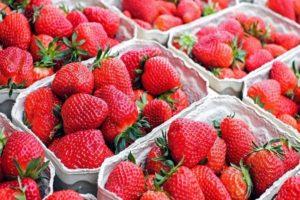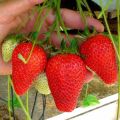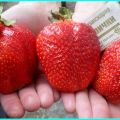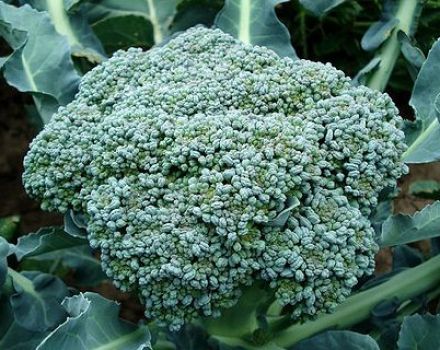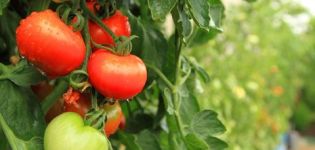Description and characteristics of strawberries of the Alba variety, reproduction and cultivation
Many farms are now growing strawberries for sale. They acquire varieties for planting that do not lose their presentation during transportation, but are inferior in taste and aroma to berries that ripen in summer cottages and suburban areas. At the beginning of the 21st century, New Fruits, a company from Italy, introduced a fruitful variety of garden strawberries. Alba is well transported, takes root in a temperate climate, beautiful berries ripen at an early date.
Description and characteristics of the variety
The closest relative of the garden strawberry Cal or Albion is grown in many countries of Western Europe, in Russia, Moldova, Belarus. Alba strawberries ripen both in the greenhouse and in the garden.
Plant appearance
A powerful bush of the Italian variety, reaching a height of 35 cm, covered with large leaves of a bright color. On strong, elongated peduncles, conical-shaped berries are tied, which, when ripe, acquire the same size and beautiful shade.
Flowering and fruiting times
Buds on strawberries of the Alba variety appear in the second decade of April, in the greenhouse - a week earlier. In the south of Russia, Ukraine, Moldova, berries ripen in mid-May, in the middle lane and Belarus, strawberries ripen until June 15.
Yield
Alba bears fruit once a season, since it is not a remontant strawberry, but the collection of berries lasts 14-16 days. The variety pleases not only with its early ripening, but also with high productivity. Under favorable conditions, about a kilogram of berries are harvested from one bush, in Russia the yield of garden strawberries is slightly lower and is about 800 g.
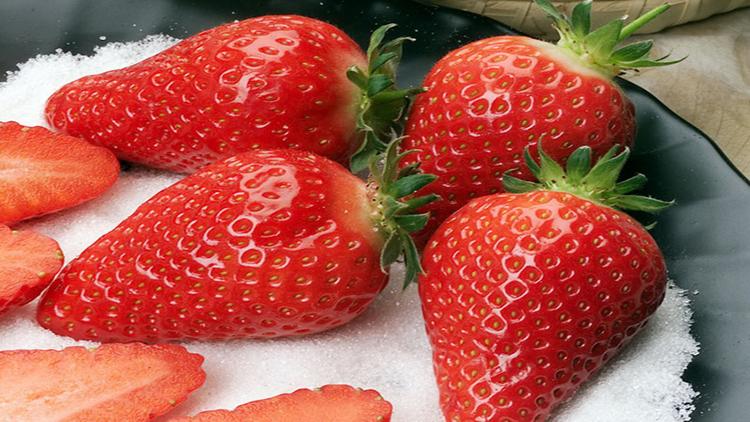
Description of fruits
Strawberries develop on long stalks that tilt and lodge as they ripen. In the Alba variety, the berries differ:
- large size;
- red and crimson;
- firm pulp.
One fruit weighs about 30 g, has a conical shape, pleases with sweet and sour taste, garden aroma. Berries ripening almost simultaneously are rich in vitamins and antioxidants.
Using
Early strawberries are eaten with pleasure by both adults and kids. In addition to fresh consumption, the fruits of Alba are frozen, used in the preparation of compotes, jams, preserves. Mash berries with sugar.
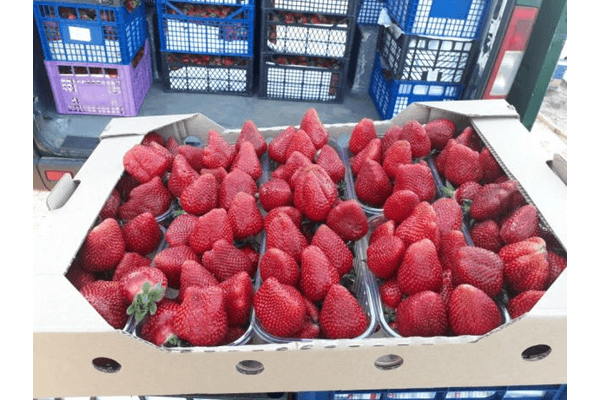
Transportability and shelf life
In boxes, strawberries of Italian origin tolerate transportation well, do not lose their presentation, do not drain with juice. The fruits of most varieties are stored in the refrigerator for 3 to 4 days, but dense berries at 0–2 ° С lie for a whole week.
Advantages and disadvantages of strawberry Alba
The Italian variety has many advantages. Garden strawberries take root in cool and dry climates, and leaves after frost. The benefits of Alba include:
- fast and friendly ripening;
- the presence of immunity to disease;
- attractive appearance of berries;
- high productivity;
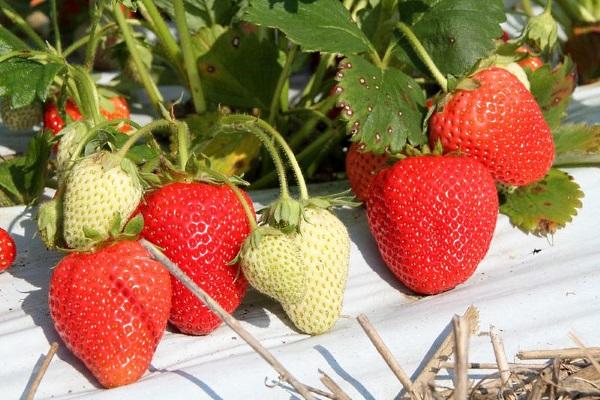
The variety does not suffer from verticillosis, is not afraid of powdery mildew, and is not affected by fusarium. Strawberries have disadvantages, but there are not many of them. The taste of berries is not rated at 5, but at 4.7 points. To get a good harvest, you need not to neglect agricultural technology and carefully look after the plantings. Variety Alba is infected with Ascomycete fungi and suffers from brown spot.
Plant growing rules
Strawberries love loose soil, in areas where groundwater comes close to the surface, they feel uncomfortable, and need good lighting. Before planting strawberries, the soil must be fertilized with organic matter, mineral components must be added.
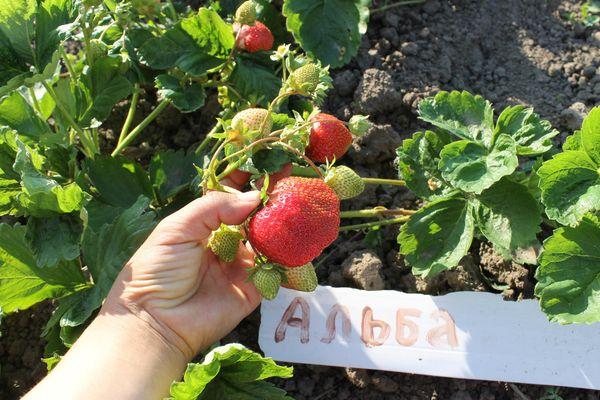
Sowing with seeds
There are several ways to propagate Alba strawberries. If the culture is already growing on the site, you can divide the bushes, but in order to preserve varietal characteristics, reduce the risk of developing diseases, plant seeds.
The inoculum is disinfected in a solution of potassium permanganate. The bottom of the transparent container is covered with gauze or cloth. With the help of a toothpick, small strawberry grains are laid out, sprayed with water, and left warm. After two days, the planted seeds are sent to the refrigerator for hardening.
Peat tablets or boxes are filled with a disinfected substrate, which is prepared by combining sand and garden soil in the same volume. A little lime is added to the soil.
In mid-latitudes, seed is planted in January or February. Strawberry seeds are laid out in shallow grooves, moistened, but not sprinkled with soil. The container is covered with foil or glass until sprouts appear.

For young seedlings to grow well:
- Regularly watered with a syringe with settled water.
- They are fed with ash or mineral complexes.
- Once a month the substrate is treated with Trichodermin.
Alba strawberry seedlings dive into separate containers. Before moving to a permanent place, young bushes are hardened, when plaque appears, they are sprayed with biological fungicides.
Growing from seedlings
Cultivation of Alba strawberries from seeds is a long process, so many summer residents acquire bushes with roots. When placing them in the soil, you need to monitor the growth point. It should be located above the surface. Strawberries are planted towards the end of summer, choosing a cloudy day. It is best to start the procedure in July, August or spring. The plant manages to get stronger before frost or heat.

Soil for planting
Alba develops well and bears fruit in loose soil, the introduction of mineral fertilizers, the addition of organic matter in the form of bird droppings, compost, biohumus helps to improve the structure of the soil.
Landing scheme
Holes are dug in the area designed for strawberries. A little sand is poured into each hole, the bushes are lowered, the space is filled with soil and moistened with water. Alba seedlings are placed every 20–25 cm, leaving up to 40 between the rows. The soil under the plants is covered with sawdust and hay, mulched with compost.
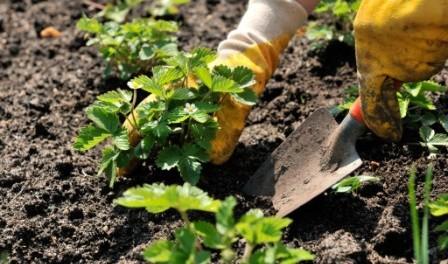
Features of strawberry care
Although Alba is considered an unpretentious variety, you need to take care of the plantings carefully - to feed, moisten the soil, and prepare for wintering in mid-latitudes.
Watering
Strawberry roots are close to the surface and cannot get water from deep layers of the earth.The culture especially needs moisture before the flowers appear. The plant responds positively to drip or sprinkler irrigation systems. After watering, the soil is loosened and mulched, which prevents the rapid evaporation of water. Seedlings need to be moistened every day, then the amount of irrigation is reduced to 3 times a week so that the soil does not dry out.
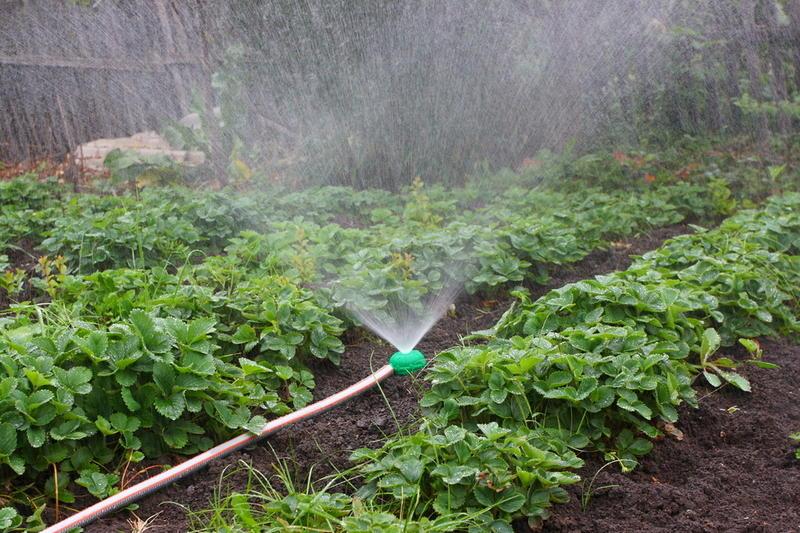
Mulching
After planting and watering the bushes, as well as for the winter, the land under the strawberries is covered with various materials. In summer and spring, this helps to retain moisture. In autumn, plants are mulched to protect against freezing of the soil, damage and death of roots:
- The needles repel pests, prevent the development of diseases.
- Strawberries are fed with green manure and straw.
- The bark of the trees is covered with bushes for the winter.
- Plants can be mulched with sawdust.
In recent years, black film or spandbond has been used. The material produced using a special technology maintains an optimal temperature and does not let the hot sun rays through.
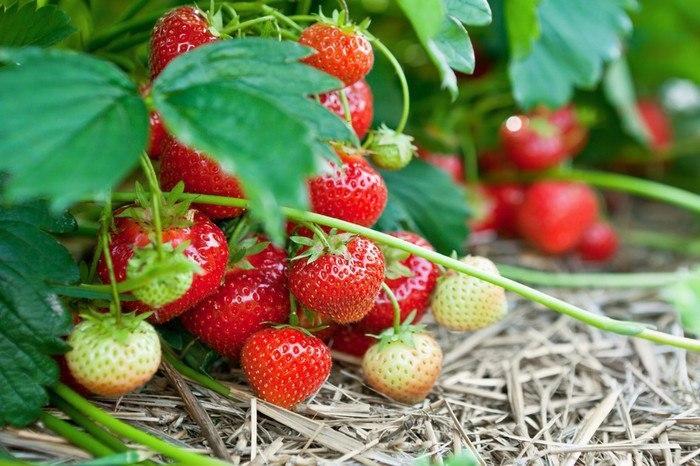
Preparing for winter
Alba does not tolerate frosty, snowless weather. To protect the plants from freezing, you can spud each bush, covering it with peat or compost on top. Suitable for mulching:
- needles;
- tops;
- hay.
Some gardeners install arcs, stretch agrofiber or spunbond. The covering material is removed in the spring.
How is the variety propagated?
There are several ways in which to increase the planting of strawberries.
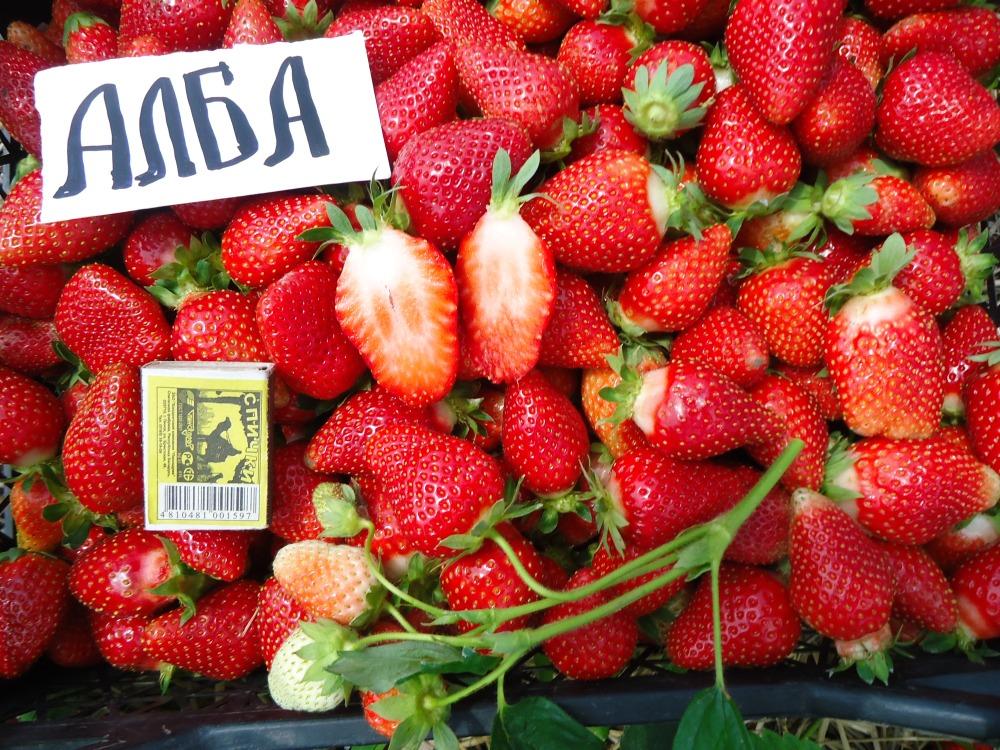
Bush division method
To propagate the Alba variety, plants are dug up in the spring from 2 to 3 years old, from which the largest number of berries were collected:
- With a disinfected tool, the roots of the bushes together with the outlet are separated into parts - 2 or 3.
- Sections are treated with potassium permanganate.
- Plants are planted in prepared holes.
With this method of propagation, strawberries harden quickly. In the same season, the first fruits appear.
Rooting antennae
In late June - early July, in a greenhouse or greenhouse, the soil is mixed with peat, fertilized with humus. Prepared soil is poured into the container and antennae are placed, which are regularly moistened and fed with a mullein. When 6 leaves appear, the strawberries are sent to the garden.
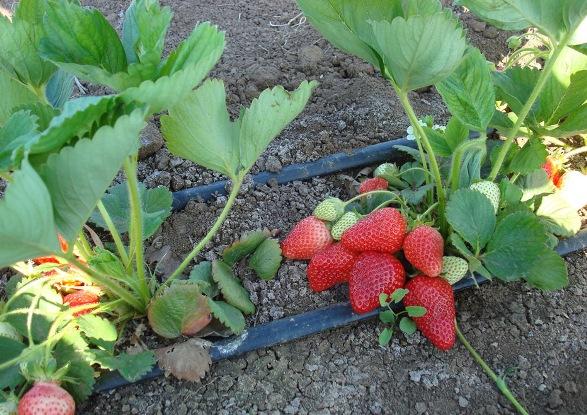
Seed method
The method for planting the Alba variety is rarely used, small grains do not always sprout. Seed material must be purchased at specialized centers. The seeds are disinfected in a solution of potassium permanganate, placed in containers with a substrate, kept warm in good lighting, dived when a leaf appears. In the spring, the seedlings are hardened and sent to the ground.
Treatment of diseases
To prevent the development of brown spot, the reproduction of ascomycete fungi, Alba bushes are transplanted to a new place every 4 years, the roots are soaked in a growth stimulator before the procedure, the soil is disinfected with an iodine solution. When brown spots appear on plants:
- Dried leaves are removed and burned.
- The bushes are watered with potassium permanganate.
- The beds are sprayed with Bordeaux liquid.
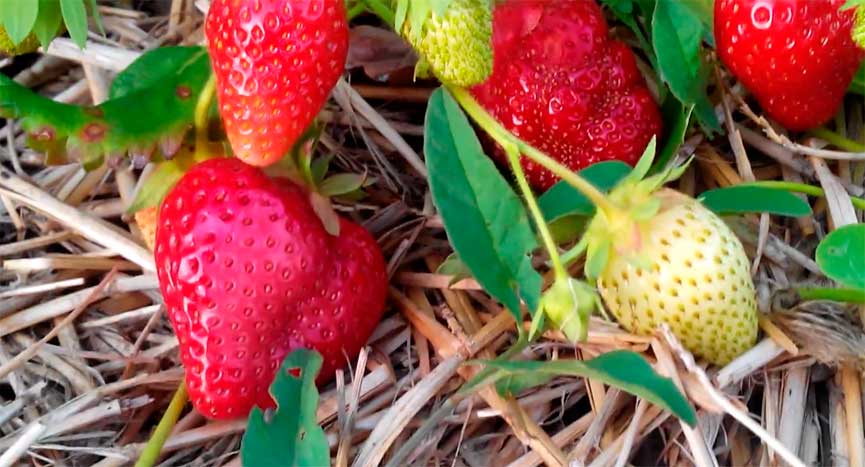
Alba is not affected by powdery mildew. The variety does not suffer from fusarium.
Pest control
Strawberries attract nematodes. In order to prevent the appearance of parasites, the bushes of the plant are dipped into hot water before planting, and then into cold water, weeding beds are weeded, the soil is disinfected with lime or copper sulfate.
A weevil wintering under leaves lays eggs in flower buds in spring.
Treatment of plants with ash or mustard helps to cope with this pest. To protect strawberries from strawberry mites:
- Remnants of stems and roots are removed.
- At the end of summer, the bushes are mowed.
- The beds are treated with colloidal sulfur or onion husks.
If the leaves of the plants are attacked by aphids, the ground and strawberries are watered with an infusion of garlic or a soapy solution of mustard. To protect against the bear, they put bait, sow calendula.Plants are saved from slugs by covering the beds with agrofibre, mulching with sawdust, and sprinkling with salt.
